Subnautica is one of my all-time favorite games, and I absolutely loathe survival games. Unknown Worlds’ underwater survival/lowkey horror title won me over thanks to its smart balancing, beautiful yet frightening handcrafted world, and intriguing narrative. So, it should come as no surprise to anyone that I was immediately onboard with Subnautica: Below Zero, the former-DLC-turned-sequel.
Below Zero has some tough fins to fill, since part of the first Subnautica’s magnetic charm was arguably created by how little we knew about the world we found ourselves in; of not knowing what illuminating or terrifying discovery awaited us. That first venture outside the Safe Shallows and into the waiting maw of a hungry Reaper leviathan was an eye-opening shock, one that’s difficult to replicate. Does Subnautica: Below Zero feel like a tired repeat of already established tricks, or is it capable of fabricating new thrills?
Subnautica: Below Zero is equal parts refinement and experiment.
The first Subnautica was a bit of an outlier within the survival genre when it debuted in Early Access back in 2014. Instead of using a procedurally generated map, Unknown Worlds opted to meticulously shape their underwater world. Rather than rely solely on the will to survive to push engagement, the team decided to tell an engaging story with a definitive ending. Players still needed to craft food and water to stay alive, and free-form exploration remained a key tenet, but Subnautica made it simple for players to grasp the basics of survival.
In many ways Subnautica: Below Zero further refines these idea. Once again the world is hand-crafted, but it’s smaller. The trade-off is Sector Zero feels better to traverse (mostly) the the Crater. It is a much denser and deeper map, with more caves to get lost within. There are even a number of polar biomes above sea-level in Below Zero than feature more to do than the islands from the first game.
The general flow in Subnautica: Below Zero is improved over the first game. In Subnautica I didn’t craft a Seaglide until the end of the game when I was already roaming around in my Prawn Suit. In Below Zero, Unknown Worlds ensured I wouldn’t overlook this important tool by placing the requisite wreckage all around my starting drop pod. Blueprints and schematics are spread out more intelligently this time around, quickening the pace of the early and mid-game.
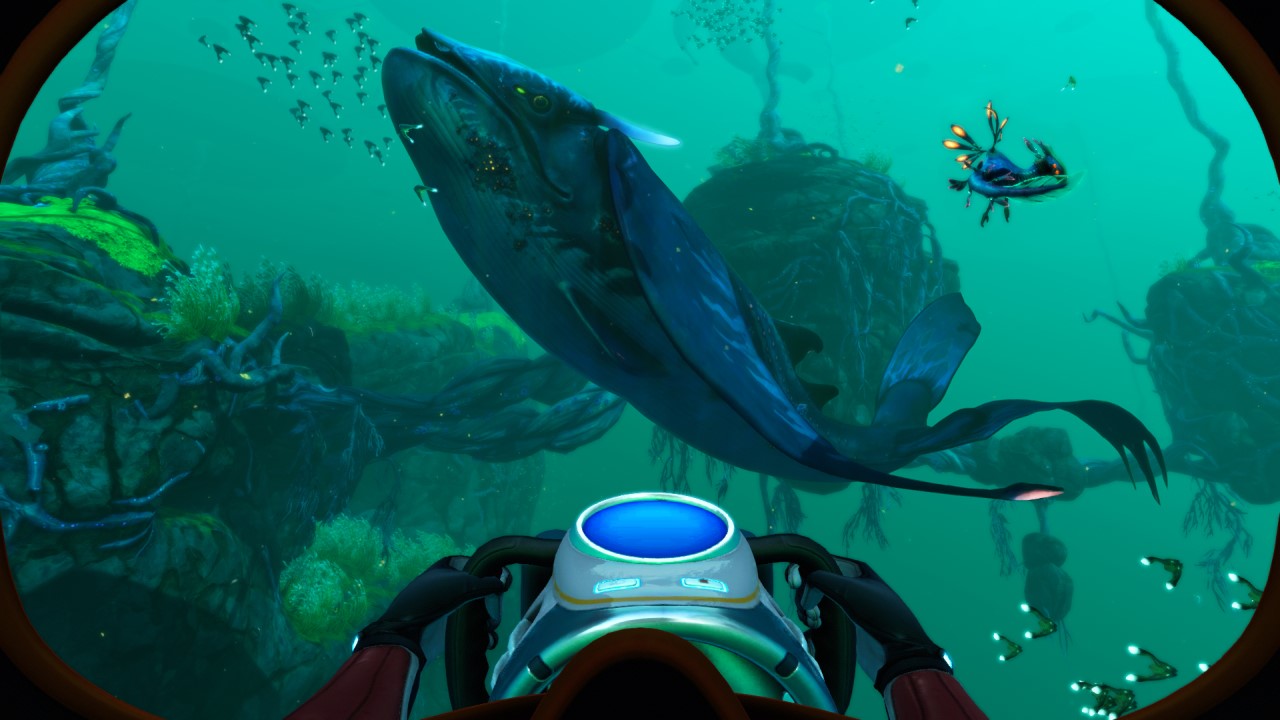
Every biome, and the resources therein, are better organized in Below Zero. There’s still plenty of harvesting, crafting, and base building to be done, yet progression between biomes synced more naturally, and I seldom had to wonder where a critical material was tucked away. The first Subnautica was solid in this regard; Below Zero simply went and improved this portion of the formula to near perfection.
That said, while the layout and organization of biomes, materials, and blueprints is better in Below Zero than in the first game, the art design and aesthetic of the biomes within Sector Zero can’t quite match up with those from the Crater in Subnautica. I mean, the biomes in Below Zero are still gorgeous and imaginative. They just all felt . . . familiar at this point.
Above the sea, where everything is frozen over in a permanent layer of frost, the biomes fare less favorably. While it’s impressive how well Unknown Worlds rendered different variants of permafrost in Below Zero, the Glacial Basin and Artic Spires simply can’t compete with the superior underwater biomes. As for below the waves, there’s nothing quite as expansive as the Grassy Plateau or Dunes in Subnautica: Below Zero, nor do the biomes in Sector Zero elicit the same sensation of panic commonly experienced during the first game.
Much of the fear and dread that came from exploration in Subnautica is either muted or non-existent in Below Zero. Admittedly, much of that is due to diminished returns. We know there are leviathans lurking in the depths. The fear of the unknown just isn’t as much of a factor anymore, despite there being fresh, new threats in Below Zero more than happy to drown our hopes. In a way it’s merely part and parcel of being a sequel: you can only repeat the same trick so many times before it becomes stale.
Thankfully, Below Zero manages to feel nearly as exciting and captivating to play as its predecessor. The narrative that drives Below Zero forward is more involved than the one from the first game. Out of the gate, Robin is a better realized and actualized protagonist than Ryley ever was. Her journey to Planet 4546B to discover what happened to her sister bucks the usual survival genre tropes since Robin is not actually in need of rescue, and the story is all the better because of this.
Robin is not actually in need of rescue, and the story is all the better because of this.
The tale has a couple of divergent branches that come together to form a satisfying conclusion, and each does a wonderful job of pushing players along, guiding them from biome to biome in Robin’s pursuit of answers and closure. The main path forward isn’t always to “go deeper” – the story often subverts this particular portion of the formula. As a matter of fact, the main thread involving Robin’s search for her sister largely takes place on land during the second half of the tale.
A second, parallel (though just as critical) narrative branch requires players to dive deeper and deeper into Sector Zero’s icy ocean blue. This portion of Subnautica: Below Zero works exactly the same as it did in the first game. You’ll need better equipment, modules, and vehicles to survive the crushing depths, and you’ll earn these upgrades by – you guessed it – going deeper and deeper. The formula worked superbly in Subnautica, so why change it here?
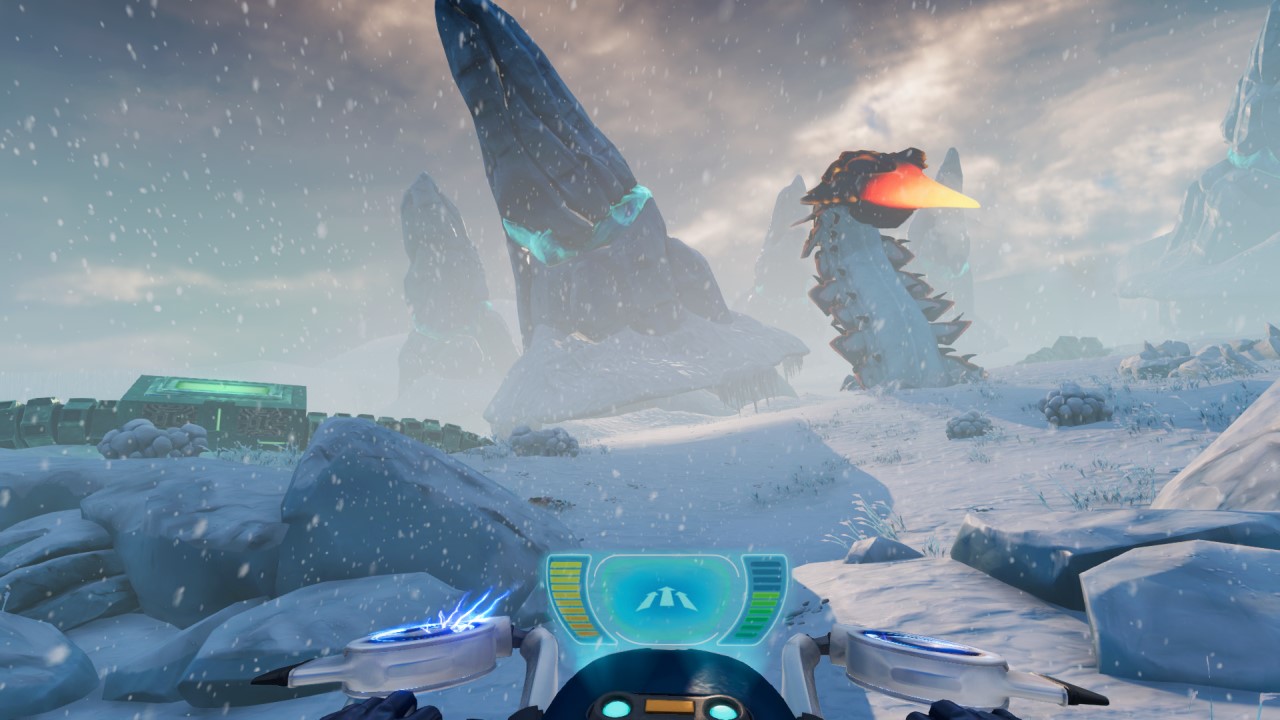
Oh, but there are changes within Below Zero.
One of the largest changes made to the seafaring portion of the game was the removal of both the Seamoth and the Cyclops submarines. They’ve both been replaced by the new Seatruck: a modular submersible that acts as cross between the two. The standalone cab of the Seatruck is for all intents and purposes the Seamoth, though unlike the older sub the Seatruck can have compartments slotted onto the back of it. You can add a fabrication module, a storage module, and even a docking module to cart around your Prawn Suit. These compartments essentially convert the Seatruck into the Cyclops, yet you can detach them at any time if you want to use the smaller cab to navigate.
The Seatruck will likely prove contentious among fans, but I’m personally on board with it. It was one less vehicle I had to upgrade, and its modular nature allowed me to tailor it to my specific needs. The ability to pop off the cab whenever I needed to survey a smaller cave system made the Seatruck infinitely more versatile than the gargantuan Cyclops, and I could still cart my Prawn Suit around with it. That said, I did miss Red Alert/Abandon Ship playing whenever my sub was about to implode.
The Seatruck is infinitely more versatile than the gargantuan Cyclops.
The increased focus on terrestrial survival will be divisive, but it’s not as large a focus as some may think. Yes, there will come a point where you’ll need to spend a good chunk of time above water. Thing is, survival above is functionally the same as it is below. You still need water and food, body temperature works exactly the same as oxygen, and you’ll want to craft a habitat to make your life easier. All of these requirements are easy to manage, just as they are in the ocean.
I know, the game is called Subnautica, but the portions outside the water are still pretty damn good (the more boring biomes aside). The one exception is the Snowfox land vehicle: that thing is fiddly. Not only that, but a two-dimensional speeder just can’t compare to the more nimble, three-dimensional Seatruck. But, it’s really the only mechanical blemish attached to the surface portions of the game. Despite the more muted environments the dry land wasn’t short on thrills.
There are also a helpful number of welcome quality of life additions in Below Zero. My personal favorite is the Quantum Locker, a storage unit that has a shared inventory with other Quantum Locker. It may not sound like much, but little outpost bases go a long way in Subnautica and a shared storage locker meant fewer inventory runs between bases. Furthermore, recipes can be pinned now, which made crafting less of a headache since I could quickly reference my “shopping” list while exploring without having to use my PDA. None of these additions are dramatic, but they are all welcome surprises.

Performance is improved, and sound design remains amazing.
Speaking of surprises, performance is much better overall in Below Zero. Having too many items floating about outside your inventory or storage still causes the game to slowdown a bit, but I noticed virtually no stuttering this time around, and the framerate was much, much more stable than it was in the first game.
Do bear in mind that I reviewed Subnautica: Below Zero on PC. I can’t speak to console performance directly, but I imagine the next-gen consoles handle Below Zero without issue. I don’t feel confident claiming the same for the older Xbox One and PlayStation 4, since the first game infamously ran like dogshit on both consoles. As for the Nintendo Switch port, well, I’m just as curious as the rest of you. I hope Unknown Worlds nailed it, but I have my doubts.
UPDATE MAY 12th: I’ve now seen footage and reviews for the Switch port of both Subnautica’s and they’re both impressive. Turns out I need to eat some crow. The usual cuts are present in both ports – lower texture resolution, more muted lighting, super low LOD – but both appear to run at a decent resolution at 30 frames-per-second. Color me impressed.
Speaking of surprises, performance is much better overall in Below Zero.
The sound design remains excellent all-around, from the ripple of air bubbles escaping your breather, to the churn of the Seatruck’s propellers. Fans will note there’s been a change to the tunes though. Ben Prunty of FTL fame stepped in to score Subnautica: Below Zero after former composer and sound designer Simon Chylinski was fired in early 2018. While I do enjoy Chylinski’s work on the first game I’m also a big ole’ Prunty fan, and his work in Below Zero is easily some of his best.
The majority of tracks are absolutely stellar: if you don’t believe me you can listen to them for yourself over on Spotify right now. You can even collect the soundtrack in-game to listen to via the new Jukebox. Groovy. I know some fans will remain attached to Chylinski’s soundtrack (seriously, Red Alert and Abandon Ship are absolute fire), but they should give Prunty’s OST a chance: it fits Below Zero like a tight thermal wetsuit.
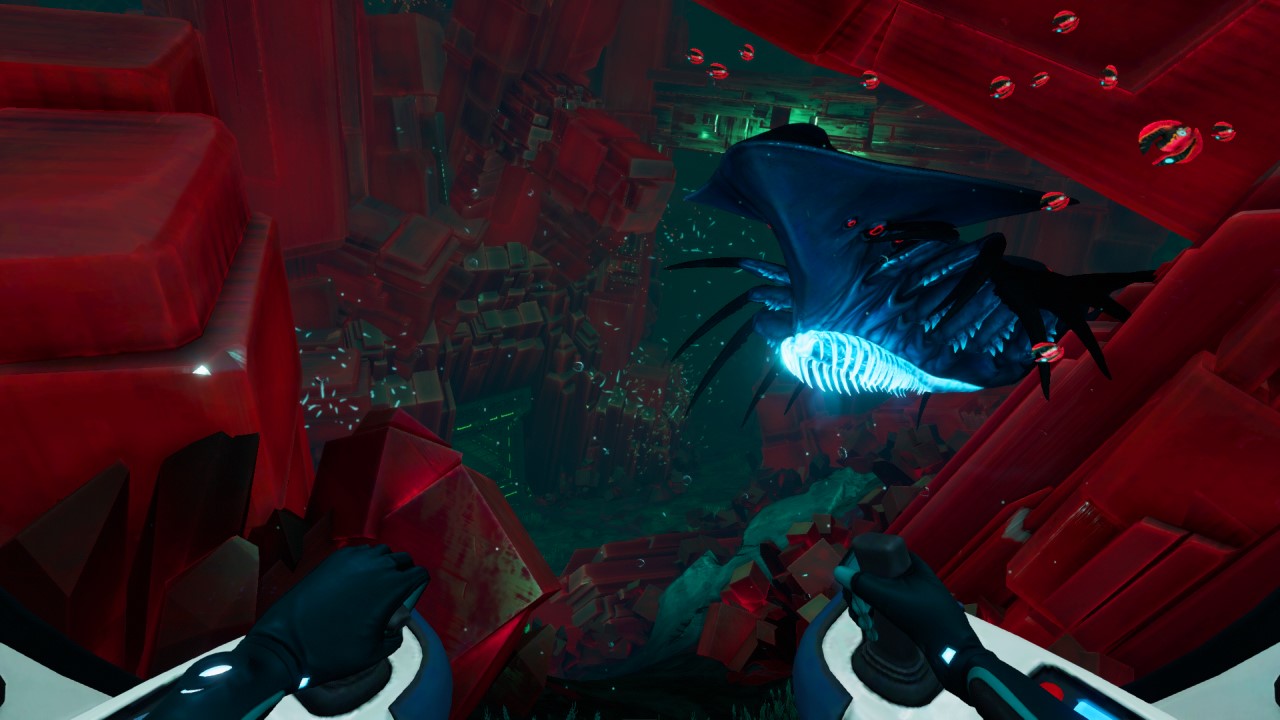
Subnautica: Below Zero isn’t without a hull breach or two.
For all the things Subnautica: Below Zero gets right there’s handful of lingering issues from the first game I wish had been padded out in the sequel. My pettiest complaint? Why isn’t there a “Mark All as Read” button for the PDA? Seriously, with all the things we scan, the waypoints we receive, and dialogue we hear, you’d think that’d little quality-of-life feature wouldn’t have slipped through the cracks.
Additionally, I really, really wish there was a more accessible map in-game. You can technically find one early one, but it’s buried in the PDA and can’t be easily referenced while exploring. I’m not asking for an Ubisoft-level map with a billion markers on it: I’m perfectly content with the minimalist map on offer since it preserves the powerful pull to explore that helped make the first game a breakout hit. I’d just like to hotkey the thing!
Why isn’t there a “Mark All as Read” button for the PDA?
As for the exploration, it is nearly as entrancing in Below Zero as it was in the first Subnautica, but as I mentioned earlier in this review the sequel does suffer from diminished returns. I would love nothing more than to scrub Subnautica from my memory only to reexperience it for the first time all over again, but I can’t. I’m familiar with the formula now, and although Unknown Worlds does experiment with it in Below Zero the game can’t escape from its predecessor’s shadow.
This comes back to the point I made about the terror not being as potent in Below Zero: we’ve seen most of the tricks already. The first time we ran into Steve the Reaper was a frightening thrill. Up to that point Subnautica appeared to be a chill, scuba-diving survival game. Then our expectations were upended violently and suddenly. Below Zero can’t repeat this exact trick because the audience expects it. This won’t be a huge issue for most, but I foresee some fans disliking Below Zero simply because it can’t reach the same heights of awe and surprise as the first game.
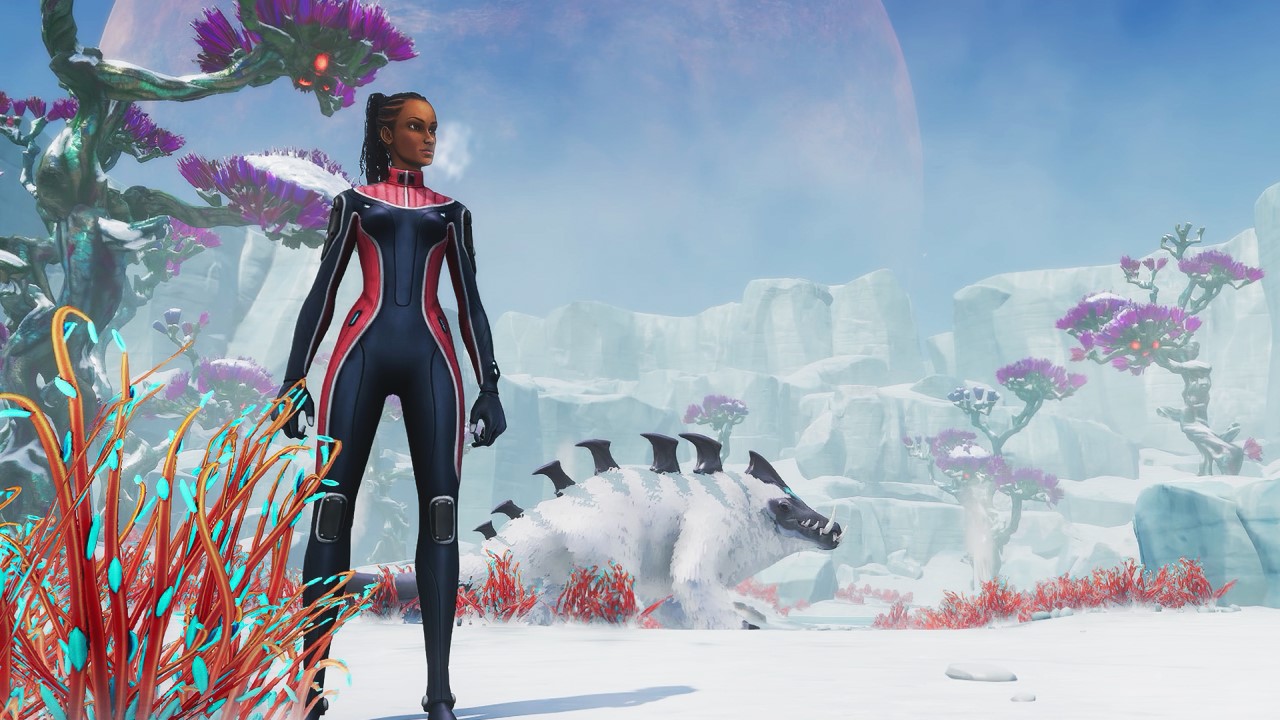
The Verdict
The Seatruck, smaller map, and greater emphasis on land-based survival are just a few of the more substantial tweaks Below Zero makes to the stellar Subnautica formula. For every ten things Unknown Worlds refined, there something experimental and new. There are many ways in which Subnautica: Below Zero feels familiar, but there’s enough different to set this sequel apart from its predecessor.
Subnautica: Below Zero doesn’t reach the same heights as the first game, but it’s proof Unknown World’s 2018 survival game wasn’t a fluke. The act of exploring a mysterious underwater world whilst trying to survive is nearly as captivating in Below Zero as it was then. I’m still not a fan of the survival genre, yet I loved every moment I spent with Subnautica: Below Zero. I may know most of the tricks by now, but that didn’t make the experience any less magical.


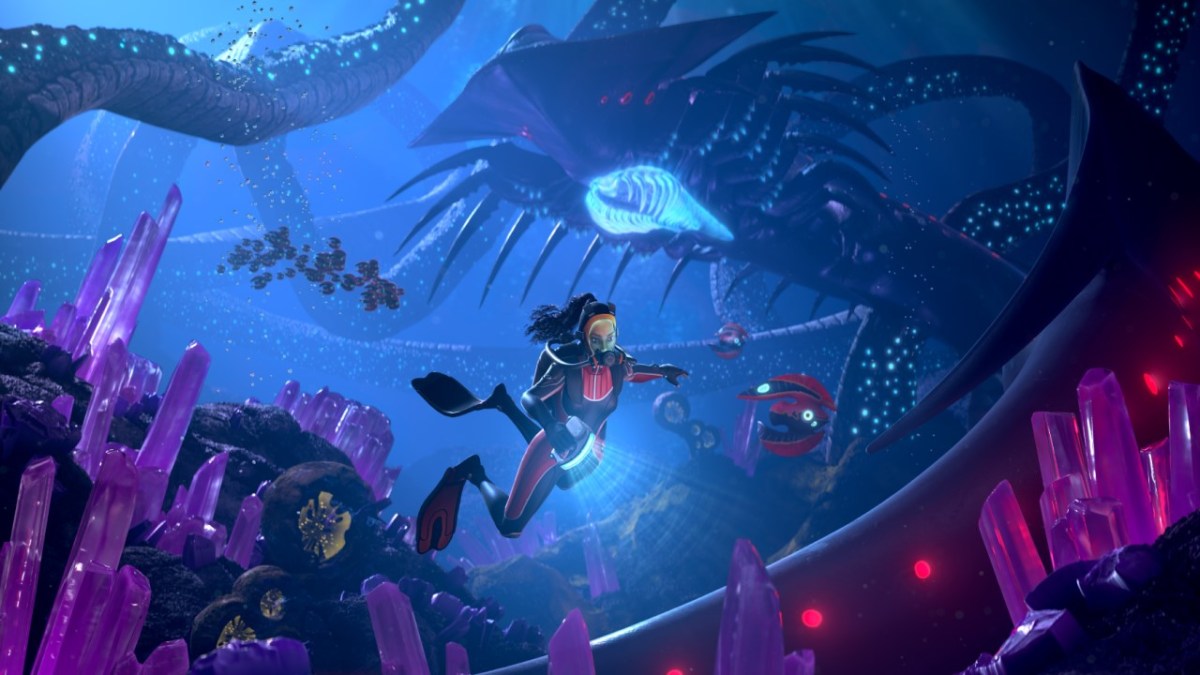








Published: May 11, 2021 11:00 am